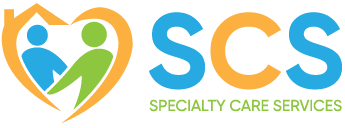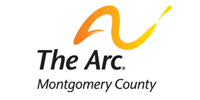In-Home Positioning & Transfer Assistance
Maryland, Washington DC, and Northern Virginia
24/7 Nurse Availability
Free In-Home Assessments
Over 25 Years of Experience
Hours:
Request Call Back
Hero Request Form
Thank you for contacting us.
We will get back to you as soon as possible.
Please try again later.
Make Every Transfer Safer - Get Expert Help Today
Move safely at home: we bring professional in-home help to you or your loved one! At home assistance to reduce falls, protect skin, and ease caregiver strain, so bed-to-chair, toilet, and daily mobility feel safer and more predictable.
When daily activities like standing, turning in bed, or moving from a chair to the toilet start to feel unsafe, life can feel overwhelming for both the client and their loved ones. Many people facing mobility challenges, paralysis, or a high fall risk need more than family support—they need professional in-home transfer assistance.
Our nurse-led In-Home Positioning & Transfer Assistance Program provides safe client transfers - reducing falls, protecting skin, and easing strain on family caregivers. We help you so that life at home is safer, smoother, and more predictable.
Who We Serve
Most of our clients who use our in-home positioning & transfer assistance struggle with:
- Mobility limits & self-care difficulty: trouble walking, standing, or getting in/out of beds or chairs. Mobility is the most common adult disability and is often a sign that hands-on help is needed.
- High fall risk: history of falls, poor balance/strength, vision problems, dizziness, and home hazards. 25% of adults 65+ fall each year, and falls are the leading cause of injury in older adults. [1]
- Taking medications that are linked to falls: sedatives, antidepressants, opioids, or orthostatic hypotension medication for blood pressure. [2]
- Additional health conditions: [3]
- Paralysis
- Strokes
- Parkinson’s
- Dementia/Alzheimer’s
- Arthritis
- Hip fractures
- Spinal Cord Injuries
- Severe Diabetes or Neuropathy
- Multiple Sclerosis (MS)
- ALS
- Limited family support or living alone: requiring caregivers regularly.
In-Home Positioning & Transfer Assistance is common: About 1 in 7 adults has some form of physical disability, with many of them utilizing some form of in-home care or support consistently. [4]
Signs It’s Time to Get Help (Checklist)
If you or your loved one has experienced one or a combination of these signs & symptoms, contact us to see if our in-home lifting & transfer support can benefit:
- Two or more falls in the last year, or one fall with an injury.
- Near-falls or grabbing furniture when pivoting or standing.
- Dizziness/lightheadedness on standing.
- Taking more than 30-45 seconds to stand, often needing arms to push up.
- Requiring two people (or unsafe “bear hugs”) for transfers.
- New weakness, foot drag, shuffling/freezing gait.
- Severe arthritis or post-surgical stiffness is limiting safe mobility.
- Neuropathy or numbness in the feet, combined with poor lighting/vision.
- Skin at risk (redness on heels/sacrum, sliding down in bed).
- Medications causing drowsiness or instability.
- Memory or safety issues with dementia (forgetting the walker or ignoring brakes).
- Equipment mismatch: no gait belt, slide board, or lift & transfer support for heavier needs.
- Caregiver strain: family can’t safely provide repositioning or toilet/commode transfer help.
- Recent hospital discharge with reduced mobility or paralysis.
How We Provide Care
We provide both skilled nursing transfer support and home health aides for transfers & positioning, depending on your needs:
In-Home Nursing:
- Safety-first assessment: we perform a fall-risk screening (walking balance checks, home hazards), determine your level of transfer needs, look over your medical history, determine medical red flags, and check vision status so that we can create a personalized transfer plan.
- Safe transfers: two-person assistance when needed, using gait belts, slide sheets/boards, and mechanical lifts per NIOSH/OSHA Safe Client Handling guidance to protect clients and staff. [5]
- Planned positioning & skin protection: to avoid pressure ulcers or rashes. [6]
- Fall-prevention program: we lead our clients through strength/balance practice while recommending bathroom and stair safety upgrades, lighting, and clutter removal. [7]
- Loved-one training: teach safe bed-to-chair/toilet transfers, when to call for help, and safe equipment use. [8]
- Ongoing monitoring: track tolerance, near-misses/falls, skin checks, and escalate changes as needed.
Personal Home Care (Home-Health Aides):
- Bathing, Dressing, and Grooming
- Companionship Care
- Fall-Prevention
- Light Housekeeping and Laundry
- Meal Preparation & Feeding Assistance
- Post-Rehab Exercises
- Errands Services & Shopping Assistance
- Transportation & Appointment Escort for follow-up procedures or medical check-ins
Respite Care:
- Short-term relief for family caregivers
- Care provided in the home so loved ones can rest, travel, or attend to other responsibilities
- Flexible scheduling to meet urgent or planned needs
24/7 Care:
- Around-the-clock home support for individuals with high or complex care needs
- Overnight monitoring to ensure safety, comfort, and prompt response to needs
- Continuous personal care, companion care, and nursing oversight as required
What Areas We Serve
We provide mobility & transfer assistance in Montgomery County, MD, Prince George’s County, MD, Howard County, MD, Frederick County, MD, Washington, DC, Fairfax, VA, and Arlington, VA.
Here are the estimated number of residents in these areas who are most likely to need our help and support:
- Bullet text
- Bullet text
- Bullet text
- Bullet text
- Bullet text
- Bullet text
- Bullet text
- Bullet text
- Bullet text
- Bullet text
| Counties / Jurisdictions | Estimated residents with disability that affects self-care | Estimated residents who are paralyzed or have some form of paralysis |
|---|---|---|
| Montgomery County, MD | 30,994 | 19,481 |
| Prince George’s County, MD | 27,968 | 17,399 |
| Howard County, MD | 9,614 | 6,114 |
| Frederick County, MD | 8,483 | 5,388 |
| Washington, DC | 21,150 | 12,640 |
| Fairfax County, VA | 33,247 | 20,897 |
| Arlington County, VA | 7,309 | 4,336 |
| Totals | 138,765 | 86,255 |
In the areas we serve, hundreds of thousands of individuals and their families need support and assistance to be mobile, travel, transfer from beds to chairs, and live safe and healthy lives. We provide this essential support, helping those with self-care disabilities and paralysis with transfers and positioning where they’re most comfortable: in their home.
Providers & Professionals We Collaborate With or Recommend
- Primary Care Providers
- Neurologists
- Geriatric Physicians
- Physiatrists
- Chiropractors
- Physical & Occupational Therapists
- Wound/Ostomy/Continence Nurses
- DME suppliers
- Home-modification pros
- Hospital/SNF discharge planners & care managers
Our Process for Providing Care – Step-by-Step
- Start with a thorough nursing assessment
- Our nurses review your medical history, physician orders or discharge instructions, medications, current movement capabilities, fall risks, equipment, current care systems, and overall vitals with a red-flag screen for health complications.
- We develop your personalized care plan
- Your nurse creates a written care plan designed to help you or your loved one be comfortable and safe at home. This may include plans for safe transfers throughout the house, plans to decrease fall risk, recommendations for home modifications, education for loved ones, improvements for equipment, and recommendations for other providers/professionals if needed to improve the safety and well-being of you or your loved one.
- Care team matched to your needs
- We match you with the right mix of skilled nurses and home health aides, scheduled to fit your needs.
- Consistent, reliable care delivery
- Your team follows the care plan every visit, whether that means nursing, personal care assistance, medication management, or other support to make care steady and predictable. We schedule your visits to meet your needs, whether that means occasional short-term respite care, regularly scheduled care multiple days per week, or around-the-clock 24/7 care.
- Ongoing nurse check-ins and updates
- Your RN checks in regularly to review your progress, update the care plan, coordinate with your physicians and therapists, and escalate quickly if new symptoms or red flags appear.
Sources
- Centers for Disease Control and Prevention (CDC).
Important Facts about Falls.
https://www.cdc.gov/falls/facts.html
Accessed September 2025. - Centers for Disease Control and Prevention (CDC).
Medications Linked to Increased Fall Risk.
https://www.cdc.gov/homeandrecreationalsafety/falls/adultfalls.html
Accessed September 2025. - Centers for Disease Control and Prevention (CDC).
Disability and Health Data System.
https://www.cdc.gov/ncbddd/disabilityandhealth/dhds.html
Accessed September 2025. - Centers for Disease Control and Prevention (CDC).
Disability Impacts All of Us.
https://www.cdc.gov/ncbddd/disabilityandhealth/infographic-disability-impacts-all.html
Accessed September 2025. - Occupational Safety and Health Administration (OSHA).
Safe Client Handling.
https://www.osha.gov/nursing-home
Accessed September 2025. - National Pressure Injury Advisory Panel (NPIAP).
Prevention and Treatment Resources.
https://npiap.com/
Accessed September 2025. - Agency for Healthcare Research and Quality (AHRQ).
Fall Prevention in Hospitals Toolkit.
https://www.ahrq.gov/patient-safety/settings/hospital/fall-prevention/toolkit.html
Accessed September 2025. - Centers for Disease Control and Prevention (CDC).
Caregiving Resources and Safety Training.
https://www.cdc.gov/aging/caregiving/index.htm
Accessed September 2025. - U.S. Census Bureau.
QuickFacts: Montgomery County MD; Prince George’s County MD; Howard County MD; Frederick County MD; Washington DC; Fairfax County VA; Arlington County VA.
https://www.census.gov/quickfacts
Accessed September 2025. - Centers for Disease Control and Prevention (CDC).
Self-Care Disability Prevalence Among Adults.
https://www.cdc.gov/nchs/products/databriefs/db381.htm
Accessed September 2025. - Christopher & Dana Reeve Foundation.
Prevalence of Paralysis in the United States.
https://www.christopherreeve.org/research-resources/fact-sheets/prevalence-of-paralysis
Accessed September 2025.
What insurances do you accept?
We accept most major long-term insurance programs, Medicaid, and private pay. To see if we accept your insurance plan, contact us and let us know which plan you utilize.
Can you work alongside my PT/OT plan to practice bed-to-chair and car transfers safely?
Yes – we collaborate and work alongside therapists (including physical and occupational therapists), as well as all other healthcare professionals you or your loved one utilizes for care.
Do you provide overnight, respite, or 24/7 transfer coverage to reduce fall risk at night?
Yes – we provide overnight care, short-term respite care, and 24/7 coverage depending on your needs.
Can you support wheelchair vehicle transfers and accompany clients to medical appointments around the DC metro area?
Yes – we offer transportation and appointment escort services, helping you or your loved one attend appointments and meetings.
How quickly can services start after a fall or hospital discharge, and what documents do you need?
We can start care within 24-48 hours after being contacted. We don’t require documents to begin care, but if there are any discharge notes or letters from insurance providers, we can obtain those on your behalf.

CP #1 Headline
CP #1 Body
CP #1 CTA Lead-in
Not valid with any other offers or promotions. Restrictions apply.
Must mention this coupon at the time of scheduling.
Reviews



